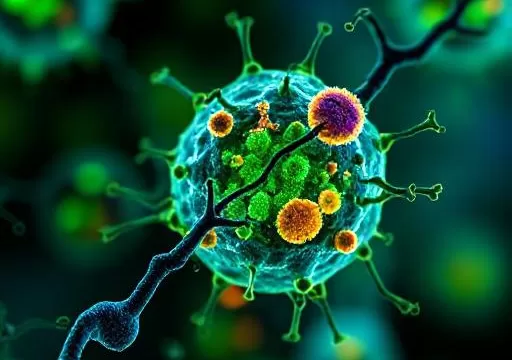 Scientists and clinicians have long dreamed of delivering the right drug in the right dose to a cancer patient without all the trial and error we experience today. Genome-based advances have allowed for real progress by identifying biomarkers that can be used to subtype cancer and stratify patients, often highlighting classes of therapeutics that are more likely to be effective. The next step is combining genomic and other technologies to merge many sources of information and pinpoint the precise drug and dose that will work for a specific patient. The dream is now closer to becoming reality, and groups already using this approach call it individualized system medicine.
Scientists and clinicians have long dreamed of delivering the right drug in the right dose to a cancer patient without all the trial and error we experience today. Genome-based advances have allowed for real progress by identifying biomarkers that can be used to subtype cancer and stratify patients, often highlighting classes of therapeutics that are more likely to be effective. The next step is combining genomic and other technologies to merge many sources of information and pinpoint the precise drug and dose that will work for a specific patient. The dream is now closer to becoming reality, and groups already using this approach call it individualized system medicine.
Truly Tailored Therapy
Scientists in several centers in Europe have now deployed advanced ex vivo analysis of cancer cells with a method never previously used. This approach involves conducting high-throughput screens of all cancer drugs and uses newer, ultra-precise dosing to test which drug works best on cancer collected directly from the patient. Their results have been impressive, and suggest that we may be entering an era of drug repurposing for far more effective cancer treatment in addition to a superior understanding of mechanism of action that can lead to new drug discoveries.
At the Institute of Molecular Medicine in Finland (FIMM) for example, scientists begin with this drug screening step, testing the effect of hundreds of therapies — separately and in combination to find drug cocktails that may be more effective — on the precise cancer cells from the patient that they’re trying to eradicate. Once they’ve generated those results and selected the best therapy at the lowest possible doses to mitigate toxicity, they perform in-depth analyses of the patient and cancer genomes to better understand how that drug or combination of drugs is acting against the cancer.
This approach integrates the treatment and its mode of action with the genetic mechanisms underlying the cancer to create an exquisitely detailed view of the whole system – hence the name individualized system medicine. With this blueprint, scientists and clinicians can better understand factors such as drug resistance / sensitivity and provide stronger evidence for drug repositioning. In one example, FIMM scientists unexpectedly found that axitinib, an antiangiogenic drug for renal cancer, was effective against a particularly intractable form of leukemia with a BCR–ABL driver mutation. Clinical studies have now been set up to test this new treatment.
[pullquote]The concept of individualized system medicine could dramatically improve outcomes for patients and reduce health care costs by eliminating rounds of expensive and potentially toxic therapy that have little effect on cancer but can severely diminish quality of life.[/pullquote]
Labs in Sweden, Spain and France are making great strides, making Europe the leader in individualized system medicine today. These groups have had a real impact on the lives of cancer patients, for whom they can rapidly and cost-effectively screen hundreds of approved, emerging and abandoned drugs, revealing chemotherapy options that are likely to succeed in addition to those likely to fail. In studies, this screening method has identified drugs that allowed patients to go into remission — including long-term patients who had already undergone many rounds of chemotherapy without clinical benefit. While our company developed the revolutionary acoustic liquid handling systems that are essential to conduct high-throughput screening affordably and with infinitesimal volumes of sample and reagents, we are in awe of what researchers have accomplished with this breakthrough tool.
It’s important to acknowledge that successful ex vivo screening results can’t guarantee that a therapy will have the desired effect in the patient. But therapies that do not function well on ex vivo cells are extremely unlikely to perform well in vivo. Because every round of treatment that doesn’t eradicate cancer reduces the window of opportunity to help the patient, it is can be just as important to avoid the wrong therapy as it is to find the right one, and better high-throughput ex vivo screening can help accomplish that.
What’s Next
Performing ex vivo screens in conjunction with deep genomic analyses is particularly important as more and more studies reveal that genomic data alone seldom points the way to the right cancer drug for a patient. There are so many somatic mutations found in cancer samples (and of course different collections found in various parts of a tumor) that it’s a monumental challenge to sort out driver from passenger mutations. Many of those somatic mutations can be found in healthy cells from the same patient, but even using data from healthy tissue to filter out benign mutations during analysis leaves behind too many candidates. Unfortunately, even when causal relationships appear to be straightforward in cancer mutations, clinicians often report disappointing outcomes from treatments targeting those mutations.
The beauty of the work done in Europe is that genomic analysis is used in conjunction with the drug screen. The phenotypic effect is already established, and the genomic investigation is therefore laser-focused on determining how a given drug is killing cancer cells. As our understanding of these modes of actions improves, we can anticipate more streamlined and effective drug discovery pipelines that use this critical information as a solid foundation.
The concept of individualized system medicine could dramatically improve outcomes for patients and reduce health care costs by eliminating rounds of expensive and potentially toxic therapy that have little effect on cancer but can severely diminish quality of life. There are two primary challenges ahead. The first is to find the best way to accelerate this method with an improved regulatory framework. The second is broad scale education of why this technique works. In either case, the goal is to have doctors and patients not waste valuable time on traditional first-line treatments that are not truly tailored to each patient.
We have a remarkable opportunity here, and I encourage labs around the world to look into the studies and multiple publications performed by FIMM and others detailing a screening-plus-genomics approach that can be replicated by any institution. Millions of cancer patients are counting on us to bring advances like this to the clinic. When we see such promise for saving lives, we must do everything we can to accelerate its development and expand its use.







